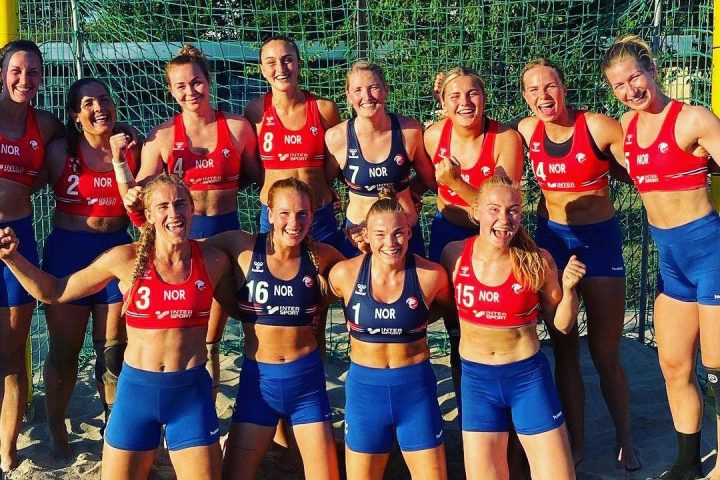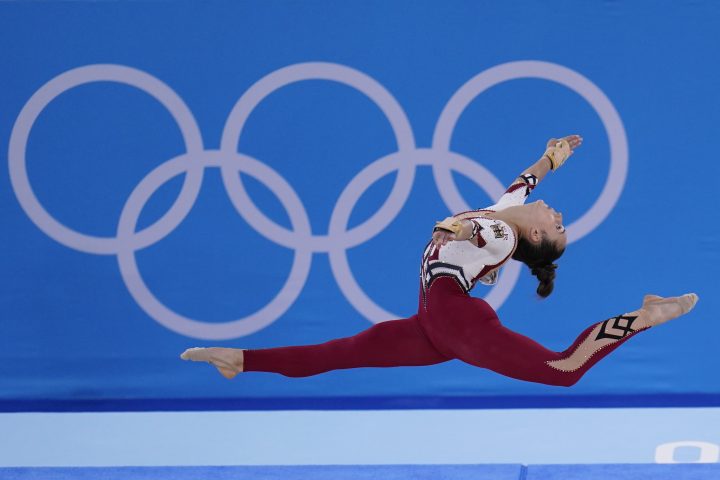After a year-long delay, the 2020 Olympic Games are in full swing in Tokyo — but for some women athletes, there was controversy around what they can and cannot wear even before the opening ceremony.

Days before the official start of the two-week-long sporting spectacle on July 23, British Paralympic athlete Olivia Breen said she was told by a female official at the English Championships that her sprint briefs were “too short and inappropriate.”, leaving her “speechless”.
Meanwhile, a swimming cap designed by U.K. brand Soul Cap specifically for thick, curly and voluminous hair that was set to be worn by Alice Dearing, Britain’s first Black swimmer at the Olympics, has been banned by the international water sports federation FINA for not following “the natural form of the head.”
Separately, Norway‘s women’s beach handball team, which is not competing at the Olympics, was fined for wearing athletic shorts instead of bikini bottoms in a bronze-medal match against Spain at the Beach Handball Euro 2021 tournament, after officials deemed the shorts to be “improper clothing.”
So far, no athletes or teams have been fined or reprimanded by the International Olympic Committee (IOC) at the 2020 Tokyo Games.
Helen Jefferson Lenskyj, a retired professor from the University of Toronto specializing in critiques of the Olympic industry and gender issues in sport, said what we saw in the lead-up to the Tokyo Games is “depressing,” but not surprising.
“There are sports where the overt sexualization of female bodies is really paramount — and gymnastics, beach volleyball and beach handball are among the top ones,” she told Global News.
“So unfortunately, that has a long tradition.”
History of ‘discrimination’
This is not the first time women athletes have been sanctioned for their attire.
In 2019, the French Tennis Federation president objected to the full-body catsuit worn by American tennis star Serena Williams at the French Open, saying it will no longer be accepted at the tournament.
At the 2018 U.S. Open, Frenchwoman Alize Cornet got a code violation warning of “unsportsmanlike behaviour” for changing her top behind the baseline on the court, revealing a sports bra.
The U.S. Open later issued an apology and clarified its policy.

In 1985, American tennis player Anne White was also told to wear something more “appropriate” by the Wimbledon referee after she played her first round in a long-sleeved white spandex bodysuit.
Lenskyj said the rules and dress code in sport are discriminatory against women, as the same scrutiny does not apply to the men.
According to the International Handball Federation rules, women “must wear bikini bottoms.” The bottoms must have “a close fit and cut on an upward angle toward the top of the leg,” the rules say, while the side width “must be of a maximum of 10 centimetres.”
As for men, they are allowed to wear shorts that are “not too baggy,” as long as they remain 10 centimetres above the kneecap.
Who makes the decisions?
The athlete dress code falls under the jurisdiction of the governing international body for each sport.
According to the IOC charter, the National Olympic Committees (NOCs), “have the sole and exclusive authority to prescribe and determine the clothing and uniforms to be worn, and the equipment to be used, by the members of their delegations on the occasion of the Olympic Games.”
Lenskyj believes the onus falls on both the IOC as well as the international federations.
She said dress codes are dictated, to a large extent, by money and commercial interests. And the rules are made mostly by men who are in leadership positions in international federations.
Moreover, with no spectators this year, the Olympics are primarily a made-for-TV event.
“The television spectacle is paramount and sex sells sport — or specifically, heterosexual sex sells sport,” said Lenskyj.
“It has been the case for decades and women have challenged that in the past and continue to challenge it.”
Amid the controversies, some women are taking a stand in Tokyo.
Germany’s women gymnasts opted to wear full-body suits or unitards instead of the standard leotard during the qualifying round in a stance “against sexualization” in the sport.
“We wanted to show that every woman, everybody, should decide what to wear,” German gymnast Elisabeth Seitz said.





Comments